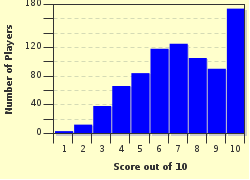Quiz Answer Key and Fun Facts
1. If you associate hymns with just the Christian church then think again. Which book of the Bible is generally regarded as being the 'hymnbook' of the Jewish people?
2. There are several passages in the New Testament that scholars believe were probably taken from some of the earliest Christian hymns. The verses below are an example of this. From which book are they taken?
"Your attitude should be the same as that of Christ Jesus:
Who, being in very nature God,
did not consider equality with God something to be grasped,
but made himself nothing,
taking the very nature of a servant,
being made in human likeness."
3. "I bind unto myself today
The strong Name of the Trinity"
These are the opening lines of the English translation of an ancient Irish hymn. By which of these titles is it commonly known?
4. One of the great hymn-writers of the Eastern Orthodox Church was a ninth century monk who, according to tradition, began writing hymns after seeing a vision of St. Nicholas. What is his name?
5. The predominant style of singing used in the Roman Catholic Church during the medieval period is known as what?
6. The nineteenth century writer, John Mason Neale, is responsible for providing English translations of many of the hymns of the early church. Which of the following did he contribute to the list of Christmas favourites?
7. The Protestant Reformation, initiated by Martin Luther, changed the religious face of Europe. Which of the following did the reformers seek to achieve in respect of the singing of hymns?
8. One of England's first printed psalters was produced in 1549 by Robert Crowley. It was unusual in being part-printed in not one but two colours. Which of these combinations did it use?
9. "Let us with a gladsom mind
Praise the Lord, for he is kind,
For his mercies ay endure,
Ever faithfull, ever sure."
Some of the world's greatest poets have written hymns. Which seventeenth century writer was responsible for the lines above, that were subsequently turned into a well-known hymn?
10. The Scots produced a psalter in 1650 that has been regarded by many as the hymnal equivalent of the King James Bible. Which of these hymns does it contain?
Source: Author
glendathecat
This quiz was reviewed by FunTrivia editor
ertrum before going online.
Any errors found in FunTrivia content are routinely corrected through our feedback system.

